Disparities and change
Life expectancy

Source: https://healthyplanetpro.wordpress.com/world-health-stats/
The world's average life expectancy has increased mostly in the last 50 years. The reasons for the increase in life expectancy include:
- Improved diet and increased food production
- Better provision of clean water
- Immunization programmes to eliminate diseases like small pox and reduce others like TB
- Better medical care
- Improved post natal care (reduced infant and child mortality)
- Better education about diet, hygiene, etc.
Despite the impressive rise in the world's life expectancy there are some countries or regions that have only seen very small rises or even falls. Reasons may include:
- Prolonged civil war
- Disease e.g. HIV
- Famine and drought
Source: http://greenfieldgeography.wikispaces.com/Disparities+and+change
Country's life expectancy
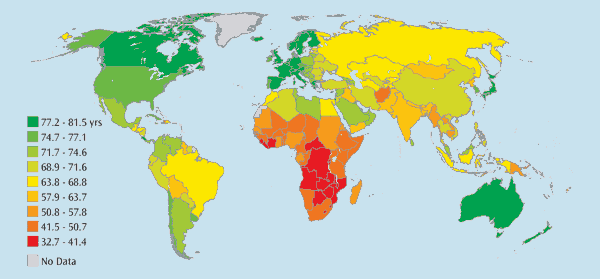
Source: http://greenfieldgeography.wikispaces.com/Disparities+and+change
Education
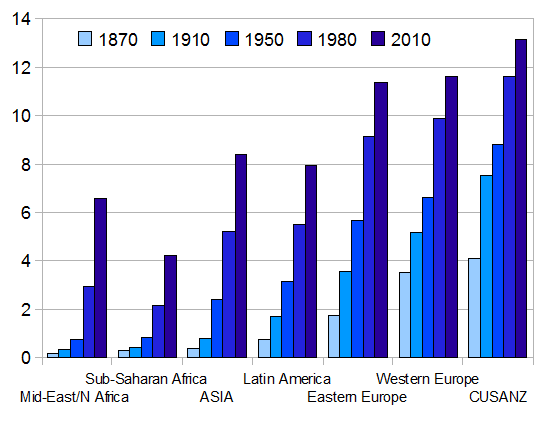
The bar graph to demonstrate that all regions are seeing an increase in the average years of schooling. However, even with the increase may children Middle Eastern and North African countries are only receiving halve as many years of education as the richest countries and children in sub-Saharan countries are only receiving as third many years of education.
Education is vitally important for may reasons, including:
- If people can read and write they are less likely to be exploited because they know what they are being asked to do and/or what to sign
- They understand the importance of family planning and can reduce fertility rates and birth rates
- They understand the importance of health, diet and medicine. They will know how to prevent diseases e.g. HIV and malaria, how to remain fit and healthy by eating a good diet and how to cure diseases when sick.
- They have a better chance of getting a higher paid job.
- They have a better chance of being independent and not relying on a husband/wife, their family, community or country.
Even the graph does show a reduction in global disparities, difference still exist because:
- Some groups in some countries appose female education
- Some countries are at war and youngsters and teachers are forced to fight.
- Some countries can not afford to provide free education for all.
- In many primary based countries children are needed to work on the land.
- In poorer countries children might have to contribute to family income, care for parents or look after the family home.
Source: http://greenfieldgeography.wikispaces.com/Disparities+and+change
Source: http://www.worldbank.org/depweb/english/beyond/global/chapter7.html
Income
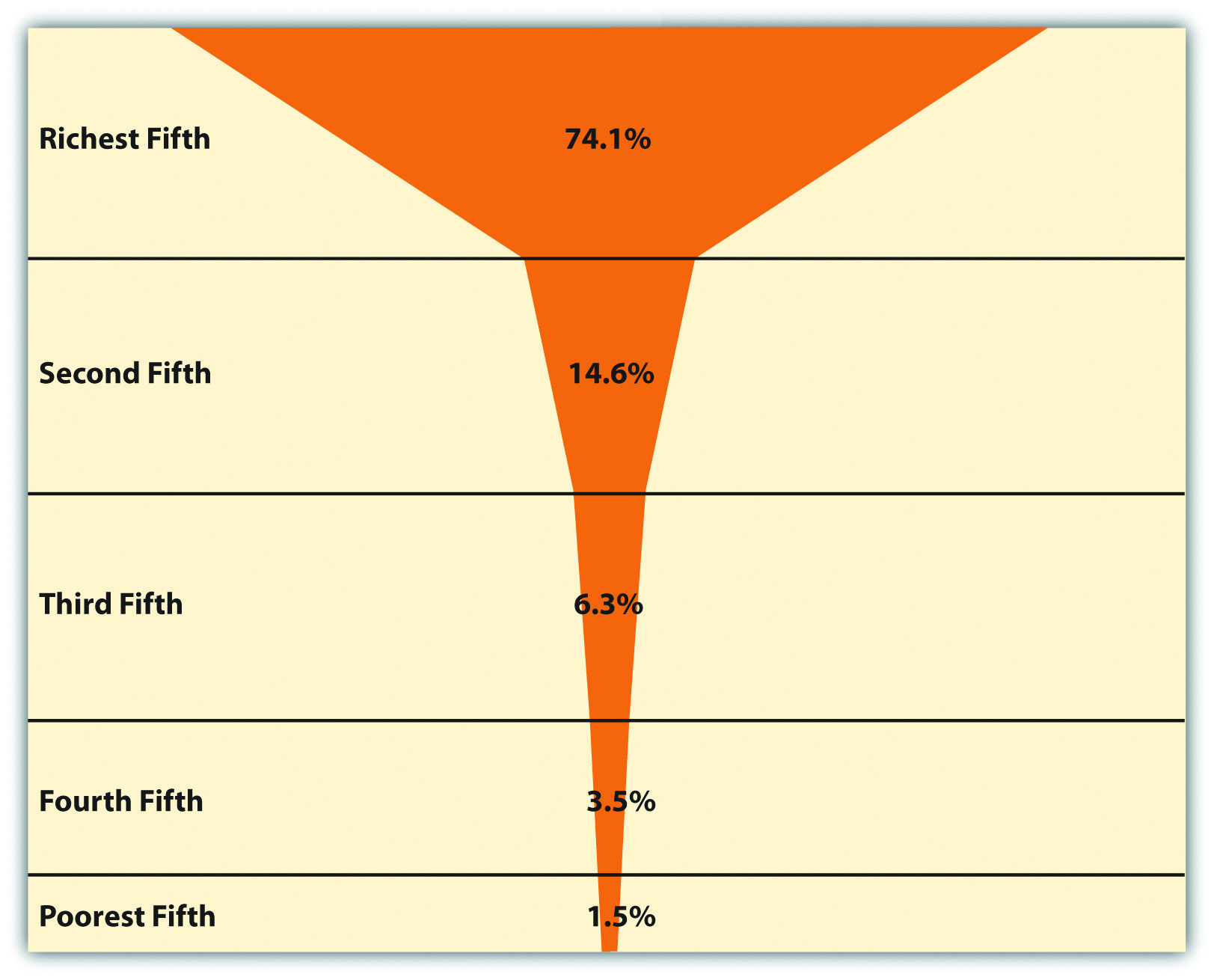
The diagram clearly shows that there is a massive gap between the rich and the poor, with the richest 5th controlling 74.1% of the world's wealth and the bottom 5th controlling only 1.5%.
Source: http://greenfieldgeography.wikispaces.com/Disparities+and+change
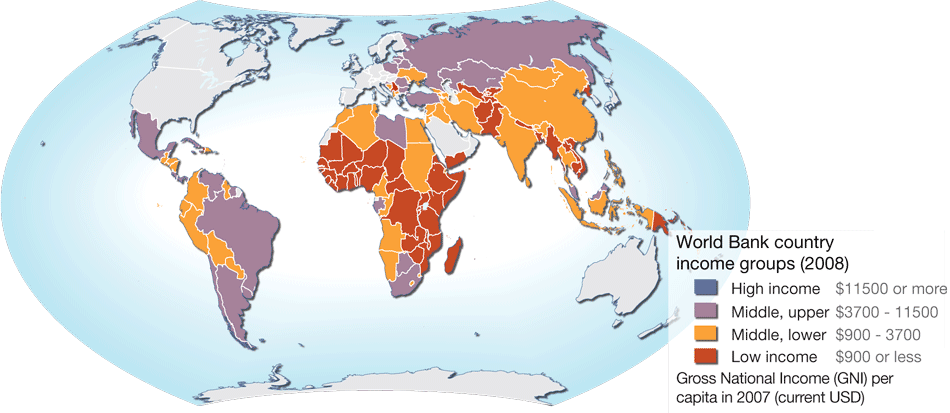
Source: https://nordpil.com/portfolio/mapsgraphics/income-map/

Source: http://www.notesonthenextbust.com/2015/06/why-was-r-greater-than-g-will-it.html

Source: http://www.economist.com/news/business-and-finance/21642656-indias-economy-grew-faster-chinas-end-2014-catching-dragon
The Millennium Development goals

Source: http://www.erewise.com/current-affairs/new-millennium-development-goals-mdg_art524d3ebd0b92b.html#.Vzx5qTUrLow
The Millennium Development Goals Report 2015
Summary
The Millennium Development Goals (MDGs) have produced the most successful anti-poverty movement in history and will serve as the jumping-off point for the new sustainable development agenda to be adopted this year.
The MDG Report 2015 found that the 15-year effort to achieve the eight aspirational goals set out in the Millennium Declaration in 2000 was largely successful across the globe, while acknowledging shortfalls that remain. The data and analysis presented in the report show that with targeted interventions, sound strategies, adequate resources and political will, even the poorest can make progress.
The final MDG report confirms that goal-setting can lift millions of people out of poverty, empower women and girls, improve health and well-being, and provide vast new opportunities for better lives.
Highlights
- The number of people now living in extreme poverty has declined by more than half, falling from 1.9 billion in 1990 to 836 million in 2015.
- The number of people in the working middle class—living on more than $4 a day—nearly tripled between 1991 and 2015.
- The proportion of undernourished people in the developing regions dropped by almost half since 1990.
- The number of out-of-school children of primary school age worldwide fell by almost half, to an estimated 57 million in 2015, down from 100 million in 2000.
- Gender parity in primary school has been achieved in the majority of countries.
- The mortality rate of children under-five was cut by more than half since 1990.
- Since 1990, maternal mortality fell by 45 percent worldwide.
- Over 6.2 million malaria deaths have been averted between 2000 and 2015.
- New HIV infections fell by approximately 40 percent between 2000 and 2013.
- By June 2014, 13.6 million people living with HIV were receiving antiretroviral therapy (ART) globally, an immense increase from just 800,000 in 2003.
- Between 2000 and 2013, tuberculosis prevention, diagnosis and treatment interventions saved an estimated 37 million lives.
- Worldwide 2.1 billion people have gained access to improved sanitation.
- Globally, 147 countries have met the MDG drinking water target, 95 countries have met the MDG sanitation target and 77 countries have met both.
- Official development assistance from developed countries increased 66 percent in real terms from 2000 and 2014, reaching $135.2 billion.
Source: http://www.undp.org/content/undp/en/home/librarypage/mdg/the-millennium-development-goals-report-2015.html
The Sustainable Development Goals
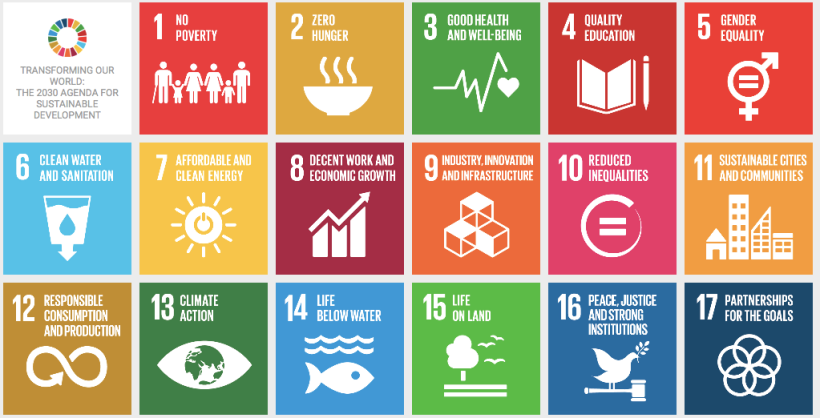
Source: https://oikosvienna-blog.com/2016/01/26/from-mdg-to-sdg-making-goals-tangible/
Follow link for input on the UN SDGs:


No comments:
Post a Comment